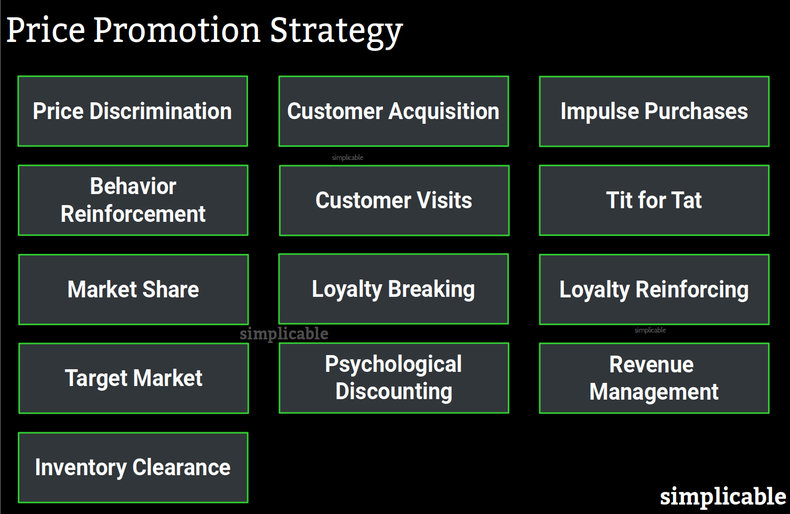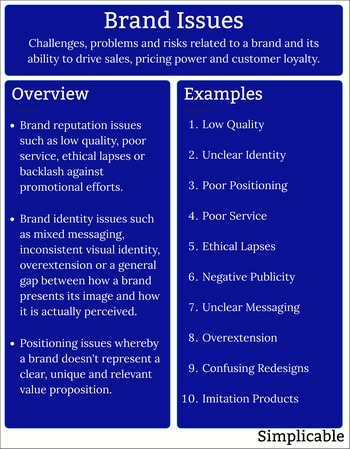

Price Discrimination
Price discrimination is a pricing strategy that charges price insensitive customers more and price sensitive customers less. For example, price sensitive customers may be willing to collect coupons to get a discount. Price insensitive customers are far less likely to use coupons unless they are easy to find and use.Customer Acquisition
Discount offers that are only available to new customers. For example, an internet provider that offers to pay the cancellation fees charged by a competitor.Impulse Purchases
Sales designed to create impulsive purchases. For example, an ecommerce site that has a 12 hour deal with a timer that counts down.Behavior Reinforcement
Sales that encourage habitual purchases such as a sale every Tuesday at a hardware store that encourages customers to visit weekly.Customer Visits
Sales that are designed to get customers to visit such as a loss leader whereby you offer a single product at an unprofitable price to attract customers.Tit for Tat
In some cases, a sale isn't aimed at customers but at competitors. For example, quickly matching any sales by your competitors as a tit for tat response designed to prevent them from starting a price war.Market Share
Sales designed to increase your market share whereby they are a long term strategy that may decrease short term profitability. For example, a night club that's relatively unpopular that offers cheap beverages to grow its customer base.Loyalty Breaking
A sale price designed to get the loyal customers of your competitor to try your product. For example, a cola that seeks to grab brand loyal customers from a competitor with a sale price of 50 cents a bottle where the competitor is charging $1.99.Loyalty Reinforcing
A sale that leverages your base of loyal customers or that seeks to reinforce their purchasing behavior. For example, coupons mailed only to loyal customers.Target Market
A sale aimed at a particular target market such as a seniors discount day.Psychological Discounting
Sale prices and discount rates that are perceived positively. For example, sale prices that feel honest and low such as $9 as opposed to $8.99.Revenue Management
Revenue management is the process of optimizing prices for inventory that expires at a point in time such as a seat on a flight or night in a hotel room. This calls for complex strategies that are responsive to inventory levels. For example, a flight that is expensive four months before departure that is steeply discounted if seats don't begin to fill a month before departure.Inventory Clearance
Sales aimed at preventing inventory problems or clearing inventory. For example, a seasonal sale in the middle of a season designed to clear inventory before it becomes out-of-season.| Overview: Price Promotion Strategy | ||
Type | ||
Definition | A plan to achieve marketing goals with price price reductions. | |
Related Concepts | ||



























